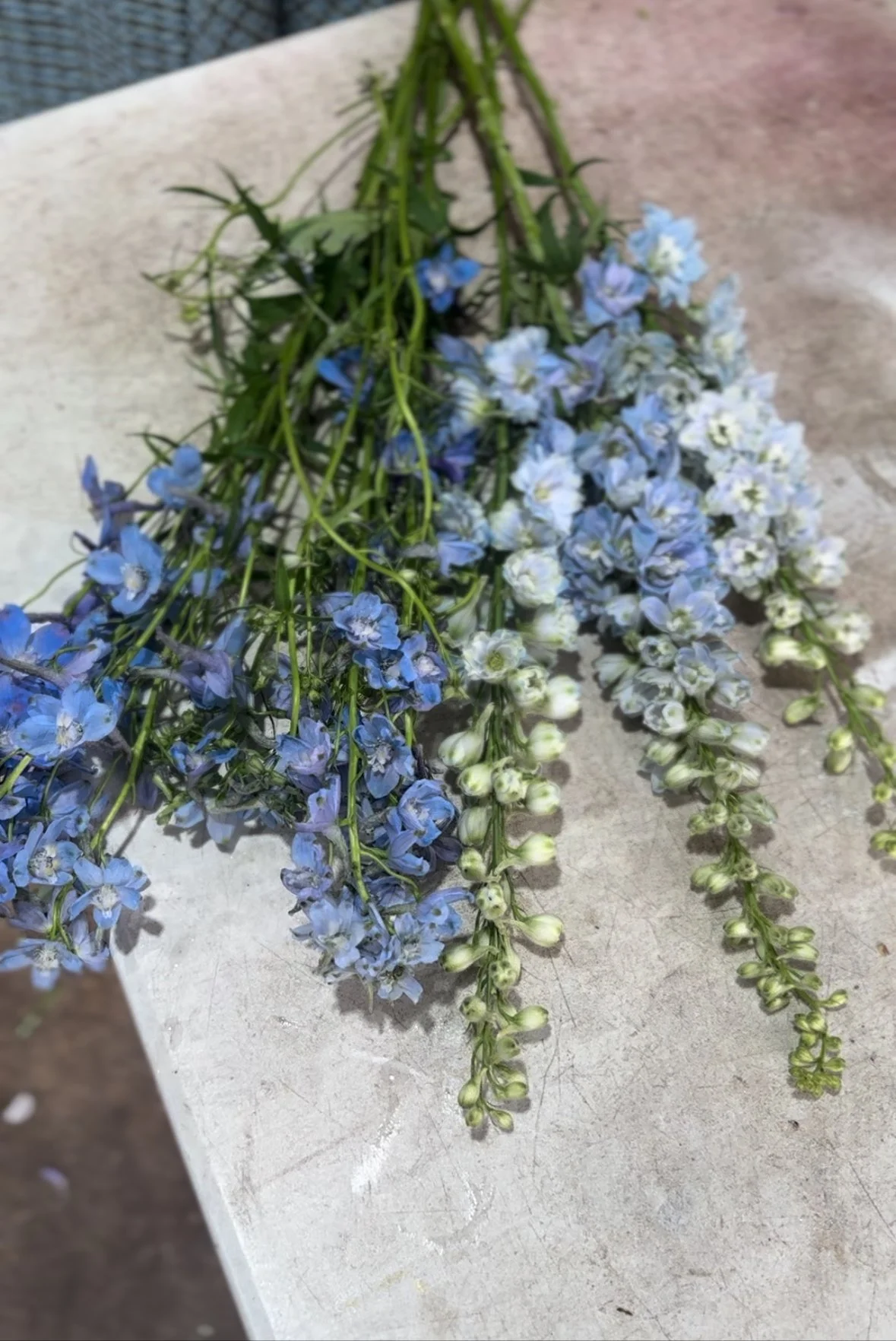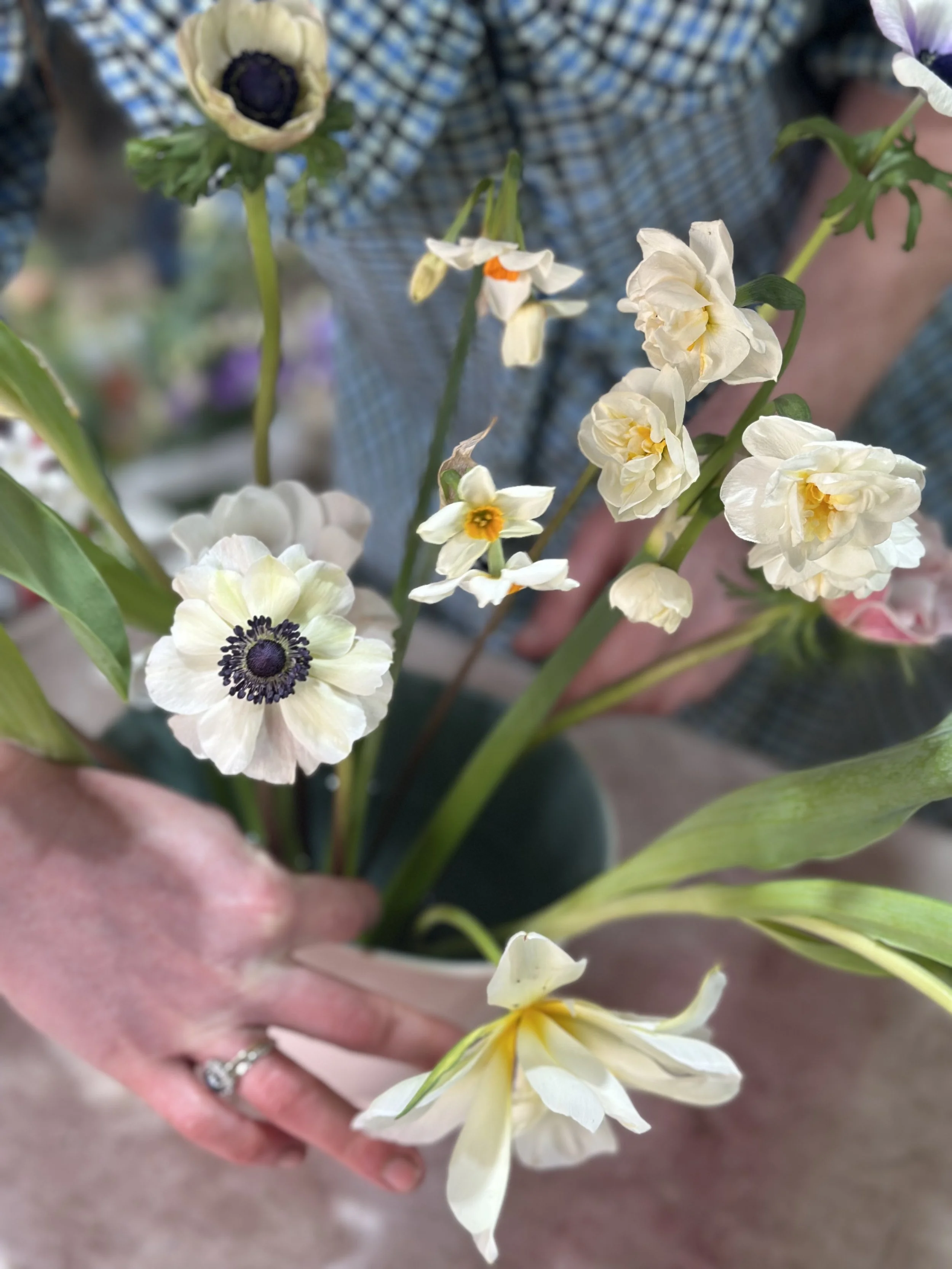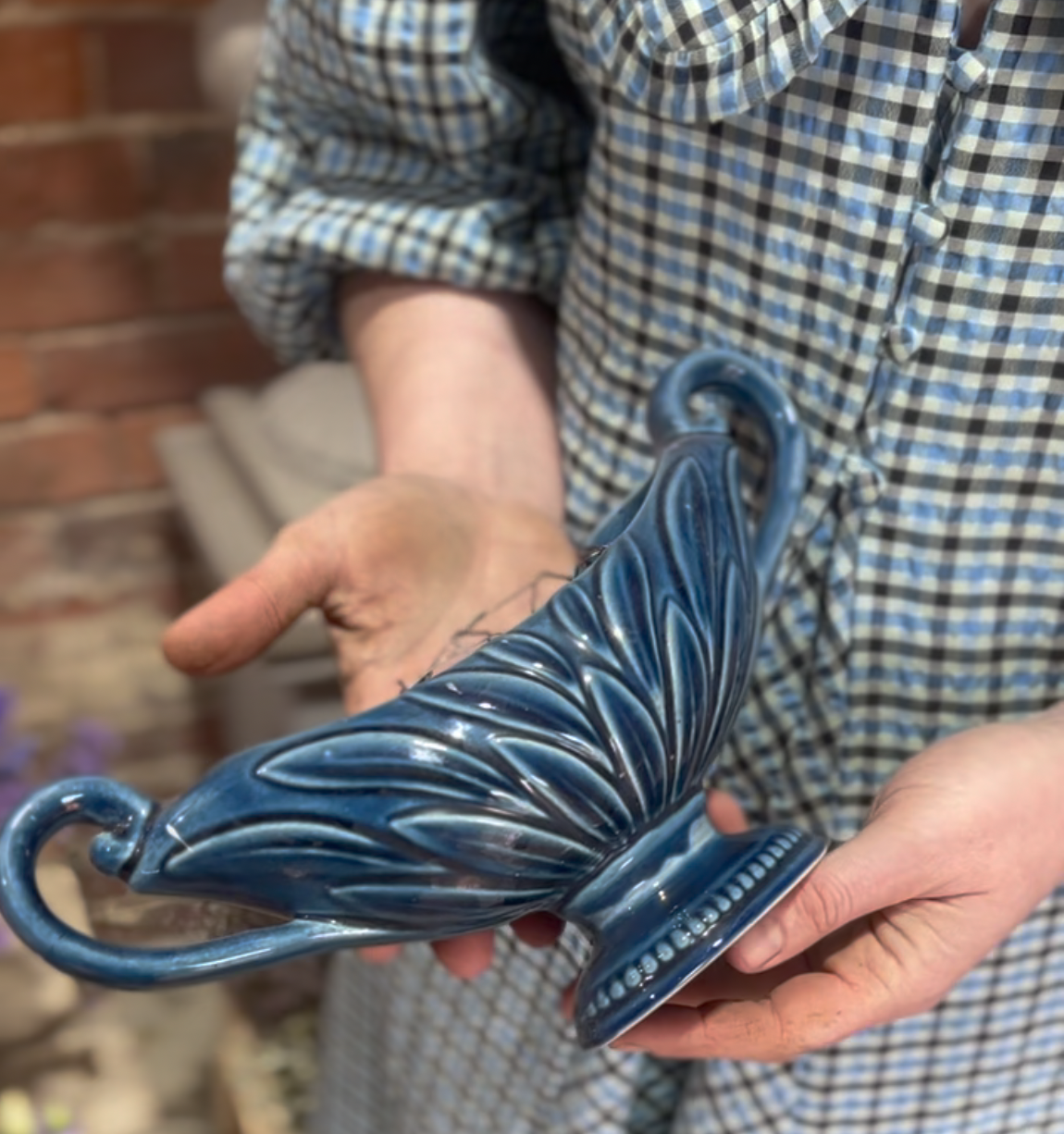An Interview with Harriet from The Lincolnshire Flower Company
A little snippet from our interview with Harriet in her gorgeous studio.
We recently spoke to florist, Harriet Whitbread about floral design and the
ethos of The Lincolnshire Flower Company.
A family team of mother, father and daughter based in ‘The Floristry’, part of the Aubourn
Hall Estate just southwest of Lincoln. They grow a range of the most magnificent British
flowers in their cutting garden, and these form the main ingredients of their beautiful floral
designs.
How did you become a florist?
I did Textile Design (Print design for fashion) at university and then completed a few
internships in London, one of them being Rixo. I then decided to do a ski season as that may
have been my last chance. Whilst I was there, I had a dream that I wanted to be a florist. So
I quit my job and went home. I emailed a few florists and asked about volunteering. One of
them said yes, I started that and booked a floristry course in London. I worked for the florist
for two years and here I am now.
How did you start the Lincolnshire Flower Company?
Covid happened and I was at home pregnant. I was spending a lot of time with my mum and
dad in their greenhouse sowing seeds. And when they bloomed, we sold little bunches of
flowers at the bottom of our drive. We promoted it on social media, people came, and we
made socially distanced purchases! After that, people kept messaging us for flowers and it
took off from there.
What is a typical day in your world?
I take my little one to nursery. Unpack the delivery of Dutch flowers which arrive very early. I
then head out to the field with my scissors and pick some out of there. It is nice to have a
mixture of Dutch and British flowers. Obviously, the British flowers are beautiful but to get the
quantities, varieties and the colours we need, we source a few from Holland.
Once I have picked flowers from the field. I bring them into the workshop, condition them and
start making; gift bouquets, wedding arrangements, flowers for funerals.
What has been your favourite project to date?
A wedding two years ago. It was someone who had faith in me as I was a year or two into
this. I think they were very supportive of women owned businesses. The client gave me free run.
The best brief! I made a big flower arch at the church. We did lots of beautiful aisle meadows
and big and beautiful arrangements in urns on the altar. They let me run wild in their garden.
There was lots of interesting foliage and I also used flowers from their walled garden. It was
all stunning and I loved using British flowers in season.
What is the most challenging thing about your job?
There are a number of challenges:
Time constraints - when doing weddings I’m not always able to get into venues early and am
given specific time slots and so I need to work with a team.
Temperature – it is difficult to keep flowers at the right temperature. Different flowers have
different temperature requirements. Some have to be keep cooler and this is not always
possible due to hot summers. And others need heat to enable them to open up.
What is your favourite flower?
A delphinium. I go back to it time and time again. They add drama to an arrangement. A lot
of flowers are smaller and circular. There are not many blue flowers. They are unique and
always brings some drama.
What are your favourite colour combinations for floral arrangements?
I am always one for colour and I have become known for my colourful arrangements. We
grow a large variety of colours in the garden. My favourite colour combinations are pink and
orange. Peaches, pale pinks, hot pinks. They are feminine, fun and bright. The various tones
of these colours are endless.
What’s your favourite foliage?
British foliage is the best and definitely the ones that are foraged. I especially love the
beautiful variegated ones. They bring lightness and brightness to an arrangement. Beech is
also great for large arrangements and silver birch because it is dangly. I still use eucalyptus
for the blue tones and the scent is undeniable. I have recently been asked to use herbs for
table bottles or bouquets. We have used mint, rosemary and lemon verbena for the smell.
What is the most underrated flower?
The common daffodil. There are so many varieties. Daffodils are pretty and I love the scent.
They are easy to find. And more recently, supermarkets have recently started selling a
bigger range e.g. narcissi
What’s your favourite season?
June is my favourite time of year to do weddings. There are such a variety of flowers
available. Delphiniums, Stocks, Foxgloves, Irises, ranunculus, alliums; there is not a better
month for all the colour varieties.
What is the most unusual thing you put in an arrangement that looked great?
We worked on the funeral of a chef and used herbs he loved and chillis in a variety of
colours; red, orange and yellow.
I’ve also used raspberries and natural strawberries. The have beautiful bendy vines and they look cute
dangling down. Especially on a table because people are sat so closely they can see them.
I would like to use tomatoes!
Do you have a go to flower?
I like to use something English. It is good to take a wander and find something quirky or with
a curve as a lot of flowers are dead straight. Natural blossom is great to use.
Where do you find inspiration for your work?
I love books and enjoy looking through them for inspiration. Instagram is great too but I
prefer to go back to how we use to do it.
You grow your own flowers. What’s the benefit to that?
We can grow a quirky variety of flowers in a number of colours. We source special varieties
from small seed growers.
What’s your favourite thing to grow?
I am always excited about growing new varieties. At the moment, it is Butterfly ranunculus
and the ones we have grown are coral which is a popular colour. They are tough to grow.
Anything that is beautiful is the most difficult to grow.
What are your favourite vases?
The shape I like to use the most is a bell vase. They are tall, unfussy and simply elegant.
They come in so many different sizes. I also like the antiquey blue tinge and green ones.
Jugs are useful because they have a small neck and don’t need a huge amount of flowers.
Foraged foliage and blossom looks great or one type of flower can be very effective.
Constance Spry Vase – These vases look great on a sideboard. My aunt worked for
Constance Spry and I love to use her vase for arrangements. It is very special to able to use
something of such sentimental value.
Bud vases – I bought a few from the Newark antique fair and love the original medicine
labels. They come in a variety of colours. You can also use simple cut glass vases which are
inexpensive. Doesn’t take much to make a simple arrangement on your table; just pop a few
flowers in.
Constance Spry Vase
This vase was originally owned by Harriet’s Aunt, who worked for Constance Spry as a florist in London.
What are your top tips for a budding florist?
Get a variety of flowers – think about colour / texture / shape.
Add delphiniums or taller blooms, round / circular blooms and then a filler to add froth around
the edges. Don’t worry about it being asymmetrical.
If you want to learn more about The Lincolnshire Flower Company, then have a look on their website below.
https://www.thelincolnshireflowercompany.co.uk/
We hope you enjoy this first instalment of our journals exploring businesses and brands we love, let us know if there’s anything in particular you’d like to hear about from us.




